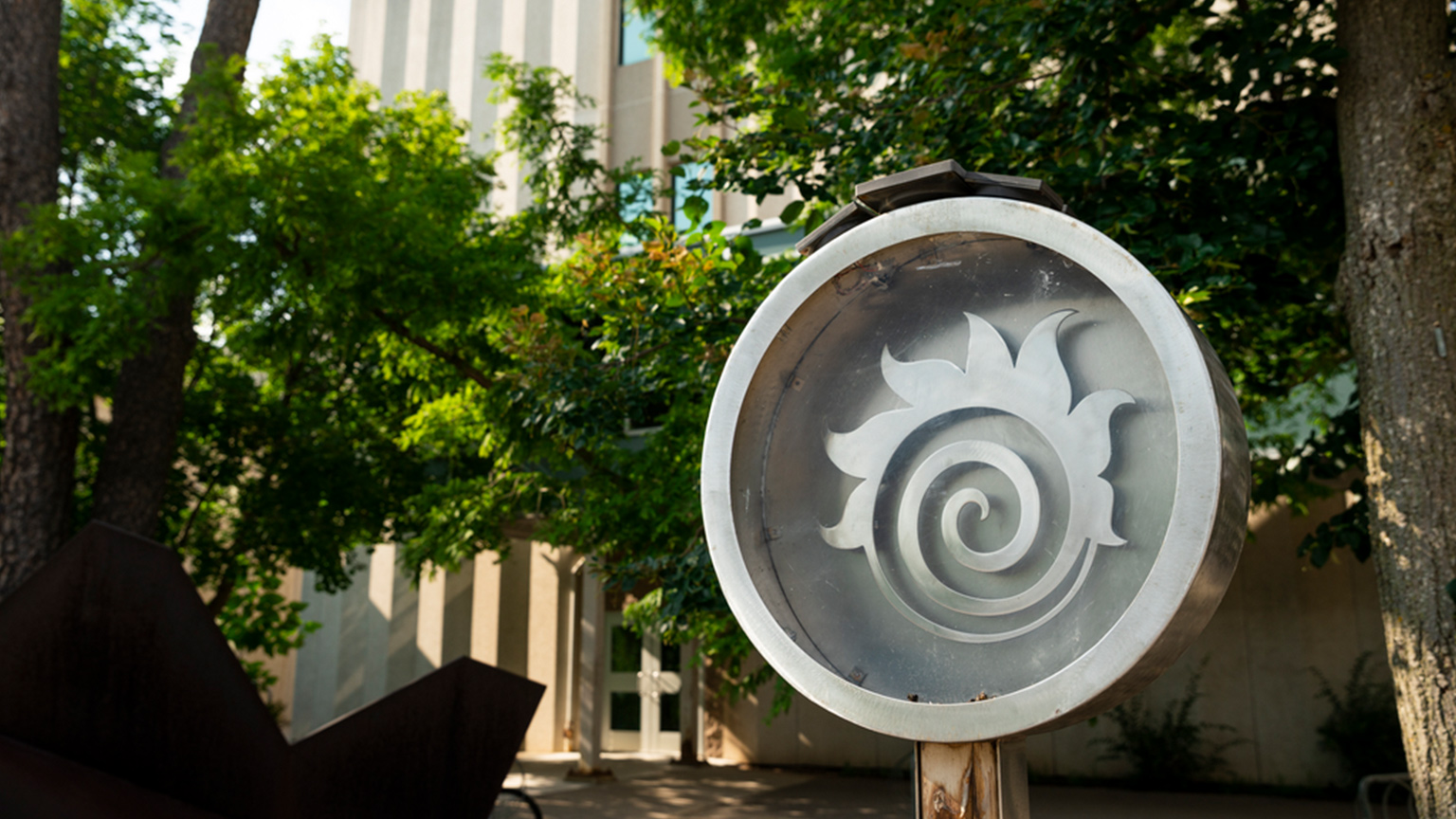
The journey is as important as the destination for capstone students who dedicate a year to applying their skills and knowledge on projects with impact. A lot of learning takes place throughout the research, design, iterating and testing that’s part of the capstone journey before a showcase event on April 9.
Learn from five project teams who shared their initial concepts and final iterations and describe how their projects are positioned to engineer a brighter future.
RombiChess
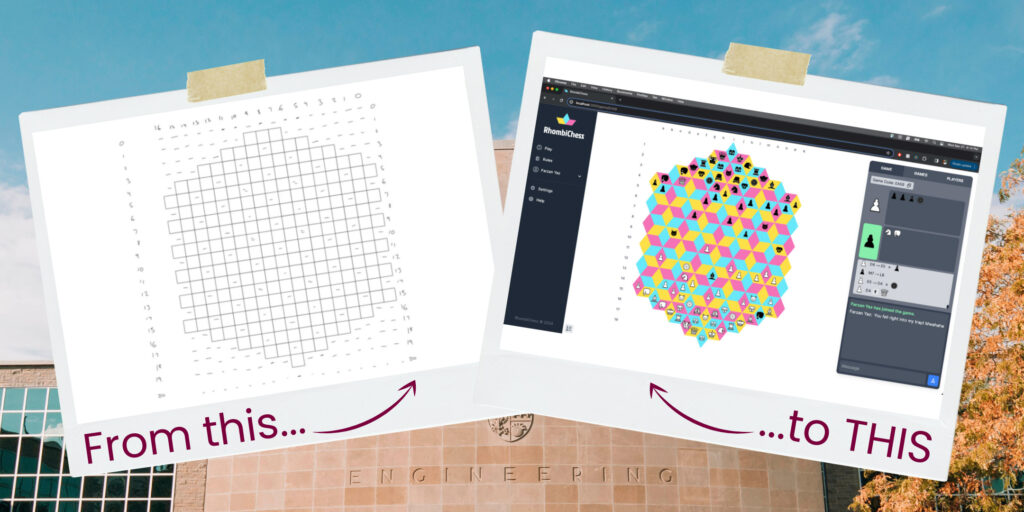
RombiChess, where traditional strategy meets innovative gameplay! A fresh twist on classic chess, featuring a challenging rhombus-shaped board and exciting new pieces!
Team members: Farzan Yazdanjou, Monica Bazina-Grolinger, Anant Prakash, Nida Nasir, Philip Lee
Department: Computer Science
The capstone journey
Initially, our Capstone was proposed as a novel chess variant, introducing a unique board and new pieces, accompanied by fresh rules. As the project evolved, we had to incorporate various intuitive gameplay features. These features helped us transform our project into a more comprehensive and interactive experience.
How will this project create a brighter future?
A new and unique chess variant can prompt strategic thinking, encourage creativity, and create a platform for social interaction. Aiding in creating a community that fosters connections of a brighter future.
Project WestLi
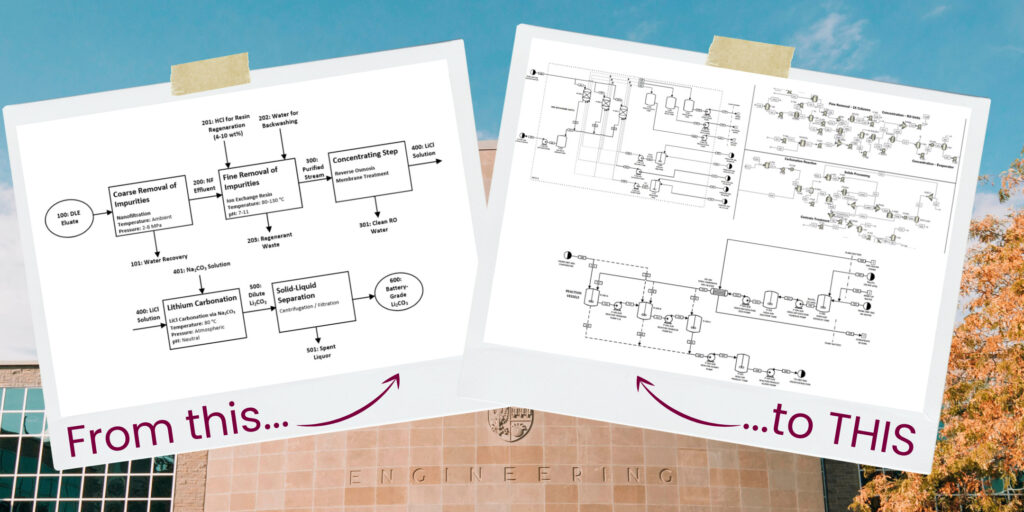
To help meet the growing demand for lithium, Project WestLi presents a novel method for producing lithium carbonate from lithium contained in underground aquifers in Western Canada.
Team members: Ashleigh Warren, Lucas Jarrett, Adi Gelb, Connor Black
Department: Chemical Engineering
The capstone journey
In the early design stages of our process, our team was able to scope out a high-level sequence of process steps that needed to be included in the design. The early stages of the process design lacked fundamental details such as specific technologies to be used, operating parameters such as temperatures and pressures, as well as any kind of economic analysis.
In our final process design, the specific process technologies and equipment required by the process have all been specified. A detailed simulation of our process has been created using the Aspen Plus modelling software, from which the results were used to size and cost the required process units. Our final design package includes all the necessary details for an industrial producer to move into the detailed design phase for the proposed lithium carbonate production plant.
How will this project create a brighter future?
As countries around the world look to decarbonize, there is an increased demand for electrified consumer, industrial, and transportation solutions that use lithium-ion batteries. Lithium-ion batteries are especially sought after for electric vehicles (EVs) as they possess high energy densities that enable EVs to reach ranges similar to those of gas-powered vehicles. However, current methods of harvesting lithium such as open-pit mining are often resource-intensive and create negative environmental consequences. By utilizing Direct Lithium Extraction, this project lays the groundwork for a more sustainable and economically viable process that can take place right here in Canada, thus contributing to the global push towards net-zero emissions and enabling Canada to be a major player in the fast-growing lithium market.
HandySpeaks
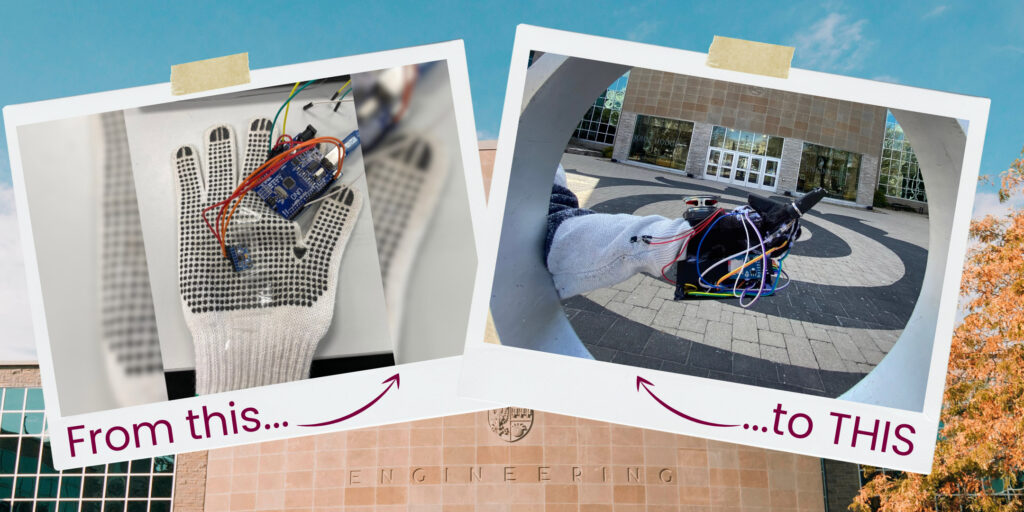
An innovation designed to bridge communication barriers for mute individuals, our smart gloves translate American Sign Language (ASL) gestures into spoken English, providing a voice to those who need it most.
Team members: Manan Kharwar, Zhili Huang, Momen Ibrahim
Department: Engineering Physics
The capstone journey
Our initial concept for the Capstone project focused primarily on developing a sign language recognition system using wearable technology. At the outset, we envisioned a glove-based interface with flex sensors to capture hand gestures, which would be interpreted by an Arduino microcontroller for real-time recognition. However, as the project progressed, we made several enhancements and refinements to the initial concept. These included upgrading to an Arduino Mega for increased processing power and incorporating additional components such as an SD card module for storing gesture data and a Bluetooth module for wireless communication with external devices. Furthermore, we optimized the system’s firmware and implemented advanced signal processing algorithms to improve gesture recognition accuracy and performance. The final product represents a comprehensive and sophisticated sign language recognition solution that exceeds the capabilities of our initial concept.
How will this project create a brighter future?
Our Capstone project has the potential to create a brighter future by breaking down communication barriers and fostering inclusivity for individuals with speech-impairment. By developing a robust and intuitive sign language recognition system, we empower users to express themselves more effectively and interact with their environment in meaningful ways. This technology has the capacity to enhance accessibility in various domains, including education, employment, and social interaction, thereby promoting greater inclusivity and equal opportunities for individuals with disabilities. Additionally, by leveraging wearable technology and advanced signal processing techniques, our project sets a precedent for the integration of innovative solutions in assistive technology, paving the way for future advancements in accessibility and inclusion initiatives. Ultimately, our project aims to make a positive impact on the lives of individuals with hearing impairments and contribute to a more equitable and inclusive society.
INEAvation
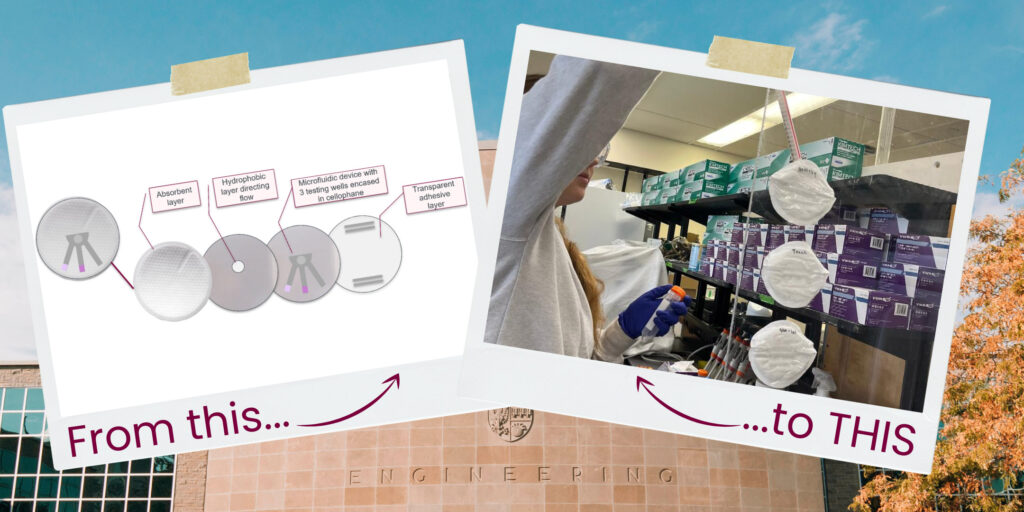
“Breastfriend”, is a user-friendly detection device for mastitis, seamlessly integrated into something that every breastfeeding mother uses: a breast pad. This innovative device will allow for early detection of mastitis through colorimetric indication.
Team members: Anushree Chakravarty, Evelyn Cudmore, Isabelle Poulin, Nardine Abd Elmaseh
Department: iBioMed & Chemical Engineering
The capstone journey
Our initial concept comprised a lactate dehydrogenase test strip attached to the back of a breast pad. To improve the diagnostic accuracy of our design, we then decided to multiplex the device by including a leukocyte test strip. Through multiple design iterations, we developed an optimized microfluidic channel design that to achieve the necessary strip saturation without being too overfull or uncomfortable for the mother. Next, we obtained a range of leukocyte and lactate dehydrogenase levels through testing of breast milk to develop an app which automatically interprets the test result, relieving the burden on the mother. The app accepts a user-uploaded image of the device, prompts user selection of the test region, and outputs the probability of mastitis (low or high) based on normalized color intensities.
How will this project create a brighter future?
With a simple Google search on mastitis, there are currently 2786 results regarding mastitis in the dairy industry and only 226 results regarding mastitis in breastfeeding mothers. This stark difference highlights the neglect that women’s health issues receive in scientific research and innovation. Through this project, we aim to bridge the gap between existing research in the dairy industry and women’s health by providing an accessible, and proactive solution for breastfeeding mothers worldwide.
GPETECHS
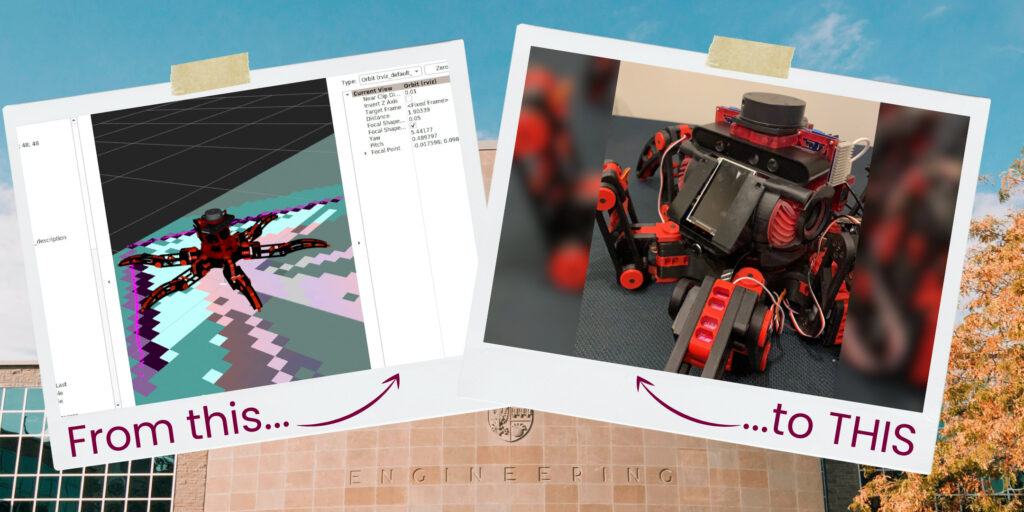
We’re harnessing advanced AI to build a robot capable of navigating on its own and understanding human language, designed to thrive in unpredictable scenarios.
Team members: Cheng Zeng, Yilin Wang, Jingwei Liu, Shenghan Wang
Department: Electrical & Computer Engineering
The capstone journey
From the beginning of our Capstone project, we aimed to realistically reach our third milestone—melding autonomous navigation with language control into our robot design. Achieving this was crucial for us to demonstrate a robot’s ability to function intelligently across different scenarios. While our ambitions included integrating sophisticated technologies like facial and voice recognition, practical time limitations led us to prioritize these core functionalities. Nevertheless, in line with our original goals, we managed to incorporate additional control features, such as remote keyboard and mouse inputs, which, while not surpassing our expectations, significantly contributed to the versatility and practicality of our project.
How will this project create a brighter future?
By fostering more intuitive and adaptable robots, our project promises to revolutionize the way we work and interact with machines. This advancement will not only boost efficiency across different sectors but also open the door to future innovations that could significantly improve our quality of life and make our interactions with technology more seamless and natural.
Check out these projects and more at the upcoming Capstone Expo on April 9 from 10 a.m. – 3 p.m. in the David Braley Athletic Centre.
